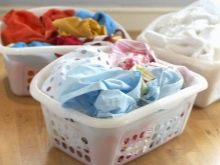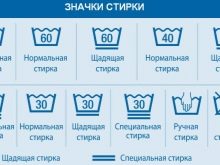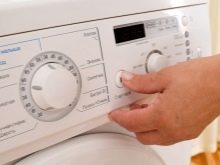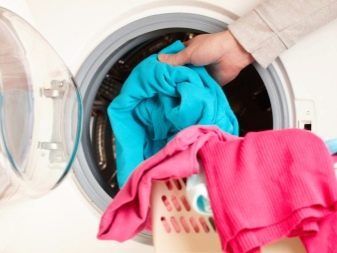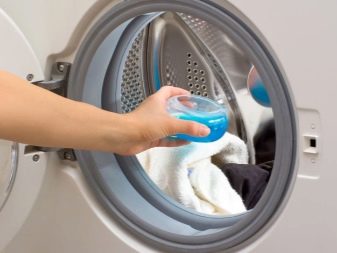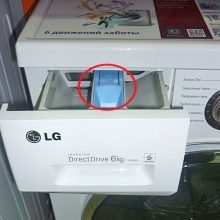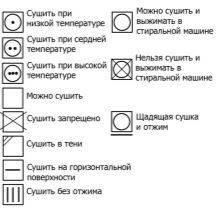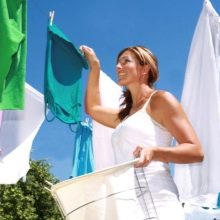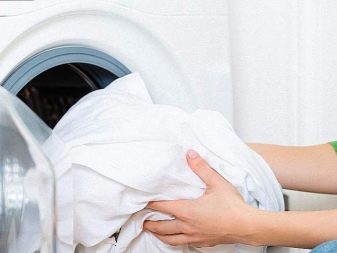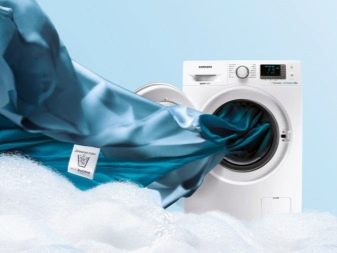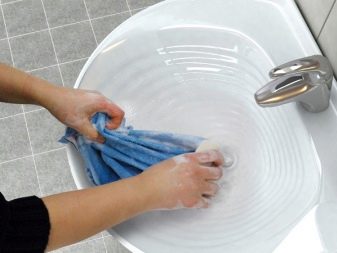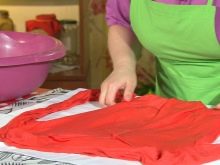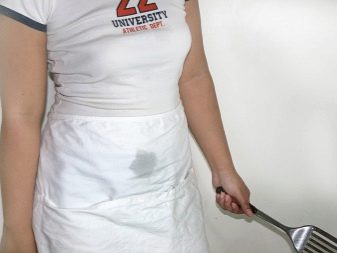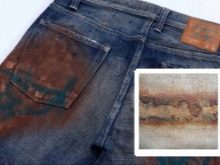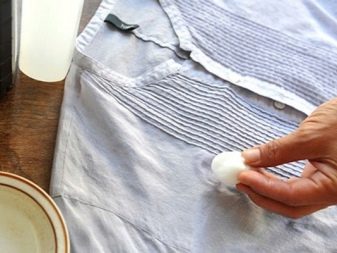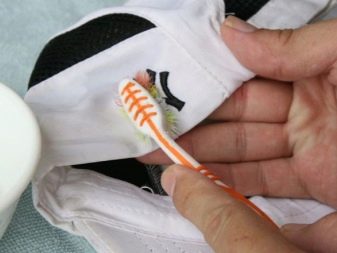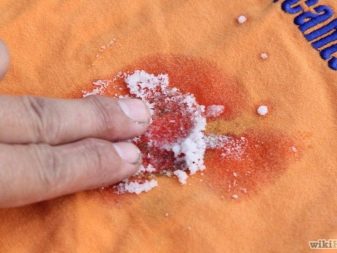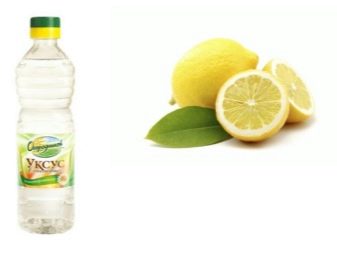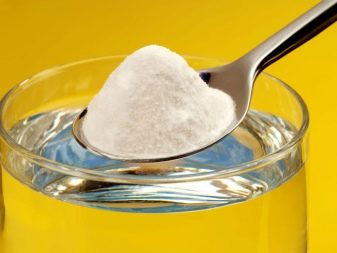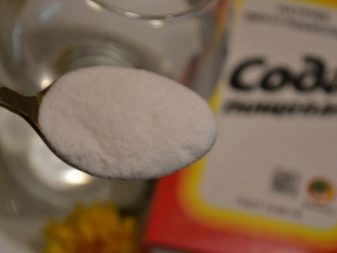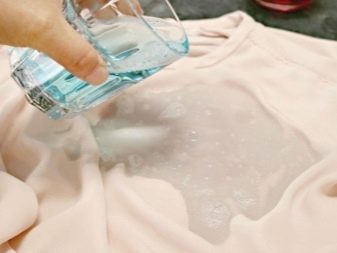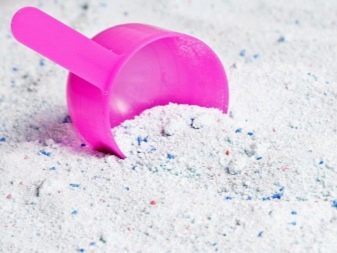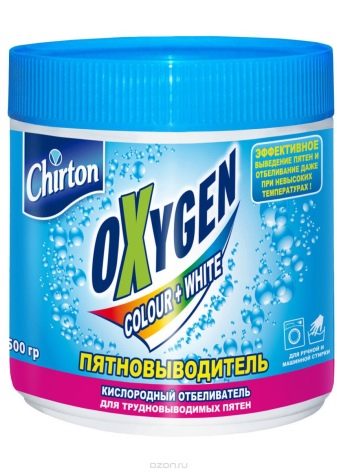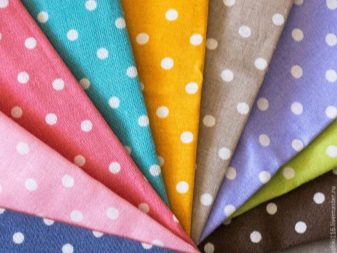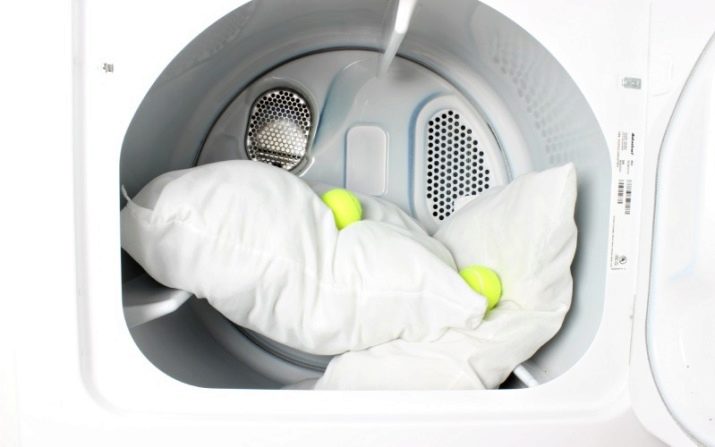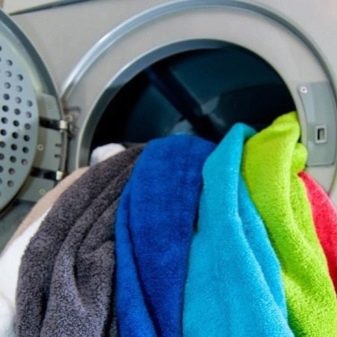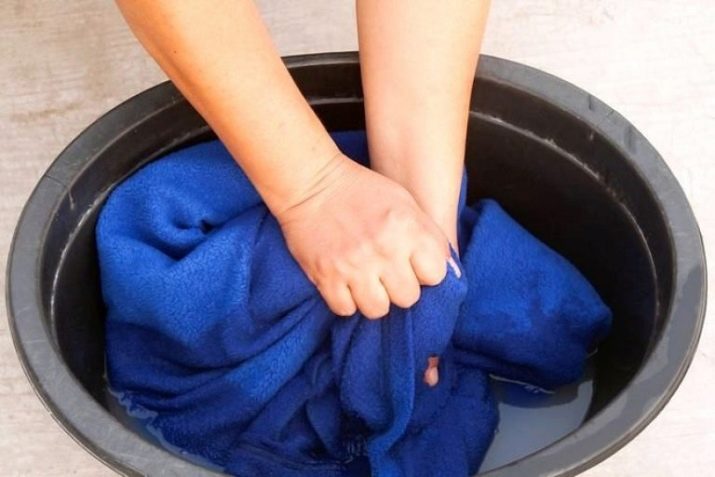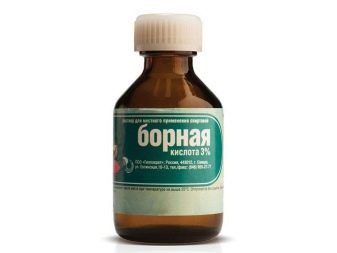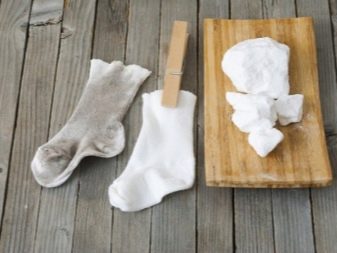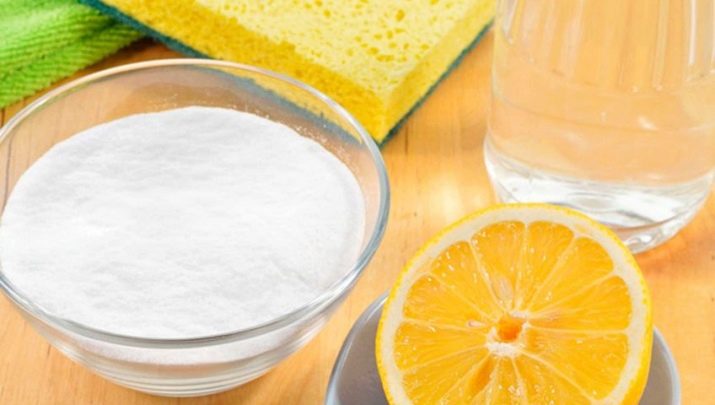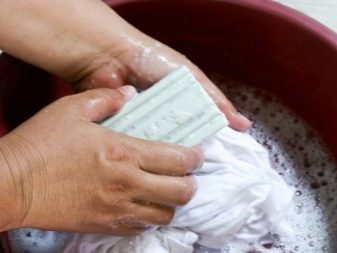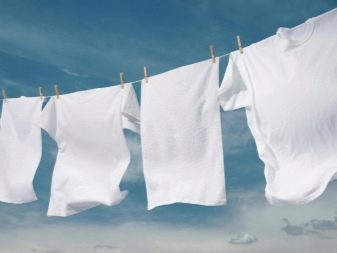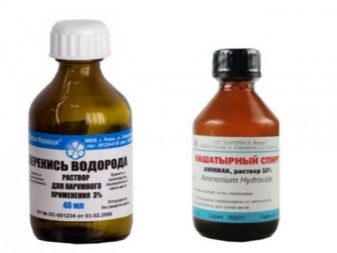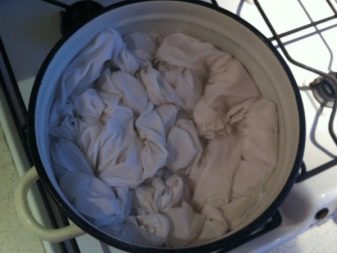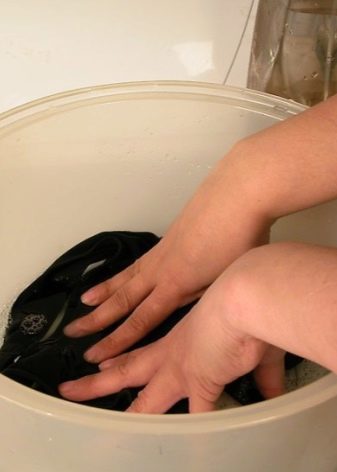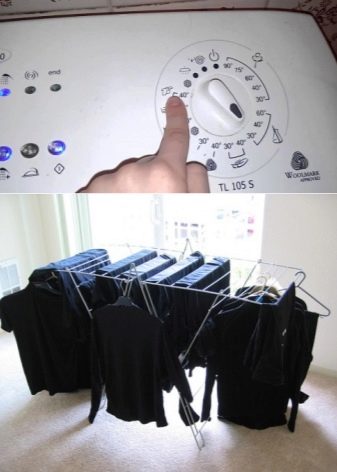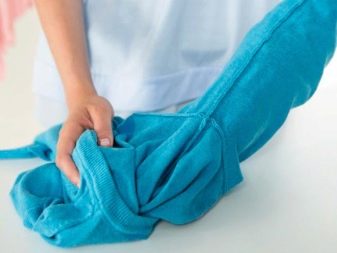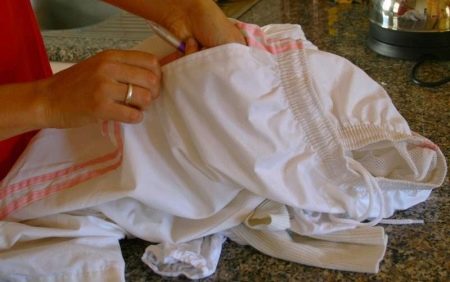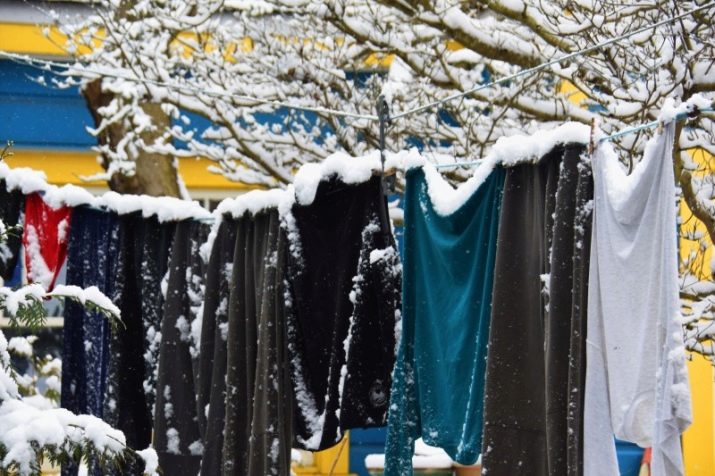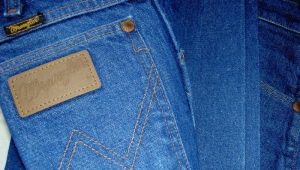How to wash: from the basics to mastery
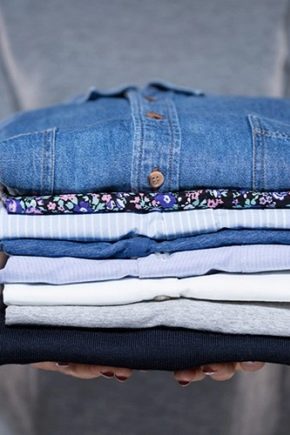
A neat appearance is a pledge not only for your well-being, but also for your true perception of others. It is not necessary to dress stylishly and expensively. The main thing is that everything is presentable. In this article we will talk about how to carefully care for clothes, wash them so that things are clean and serve for a long time.
How to wash in a typewriter?
Before you start washing things, you should pay attention to a number of nuances:
- Be sure to separate the products. Every thing has a certain color, material that must be washed in different conditions. First of all, select light and dark things. They should never be washed together. Remember that the paint may come off the new clothes. If you wash everything together, the products that have bright tonalities, can be painted.
- Divide the products according to the fabric. Thicker items, such as jeans, will need to be washed in one mode, and underwear and silk blouses in the other.
- Do not put towels and sheets in the laundry at the same time. It is better to do it separately in order to achieve an excellent result.
- Do not be lazy to look at the label that on your favorite things. He will tell you how to properly wash. There will be listed all the necessary data on the product: composition, the ability to clean, how to iron and dry. There you can see whether the thing can be washed in a typewriter or only manually.
- It is important to choose the right temperature for the procedure of cleaning fabrics from dirt. In washing machines it will be enough to establish the necessary indicators, based on the color, material and other features of the products. It is worth remembering that different things are erased at different water temperatures. For example, hot water will help to remove effectively stains on light-colored clothes. Dark products should be washed in cool water so that the paint does not wash out. Also, cold water will be optimal for cotton patterns.
- If you are washing in a typewriter, you will need to choose the amount of loading. For this there is a special button. In some cases, the machine determines the volume. Do not fill it up to failure. If you have accumulated a lot of things, it is better to divide them into several washings. By neglecting this rule, you can spoil the technique.
- Remember to choose a wash cycle. It will be different for different clothes. For example, for white things it is recommended to choose the normal mode. There is a special cycle for colored linen, where the cleaning process takes place in warm water, and rinsing - in cold. For thin products (panties, bras, thin T-shirts) there is a delicate mode.
- Now you can pour liquid substance to wipe off dirt, and close the door of the machine. It may be detergents, bleach, softener. Put the items in the appliance, and then pour out the laundry. Often in the compartment you can see how much substance is required. At the same time carefully read the instructions on the package means. There will be exactly indicated the required amount for washing.
- If you want to remove stains, you will need bleach. It will also help make products white-boiled. Such substances are with the addition of chlorine or universal. In the first case, it is not recommended to use the tool with colored things.
- To make the fabric softer, you need to apply a softener.This is especially true for towels. Such a substance must be added during rinsing. Often machines have special compartments where you can pour a softener. The technique itself will begin to add it when rinsing.
- Then you should load everything into the dryer. Remember that some products are better to air dry. Before that, look at the tag. Special characters will indicate how the item should dry. Dryers also have drying cycles. Normal mode is suitable for drying light products. Often, white things tolerate the drying process at high temperatures, they do not fade and do not shrink.
Thanks to the “Easy Ironing” cycle, your colored things will retain their brightness, beauty and saturation. With a delicate mode of rotation will be weak, so that delicate things remain intact.
Thus, in a washing machine you can wash sports trousers, a hat, shirts, a backpack, trousers, a men's suit, as well as other things important for you, including children's underwear. It is only important to establish the desired mode of operation and observe all the rules of machine wash. Then the technique will allow you to save precious minutes that you can spend on more important things.
Modes
It is worth noting that in the program of every modern washing machine there are special modes with which you can successfully wash all things. The highest temperature is suitable for cotton products. Such clothes can even be boiled to cope well with contaminants. If you need to wash delicate fabrics, for example, underwear, you should prefer a special “delicate wash” mode. This will also apply to wool products. After the end of the cycle should turn off the spin mode.
For those products that are not too dirty, you can set the “quick wash” mode. This will help save your precious minutes, as well as electricity and water. The result of the purification will also please you. If you have a task to wash children's clothes, you can choose a special mode “Bio”, “Children's things” or “Hand wash”. By the way, the last option is the most effective option for eliminating stains.
Temperature
Water during washing will be mainly such as required for the product. The surest way to find out the desired water temperature is to look at the tag. It contains all the basic information. If there is no tag, or you have already cut it, then you should look at the type of fabric. Products that are created from natural fabrics (cotton, linen), require washing at any temperature that is comfortable for you. Such models will well endure the entire procedure and will not be deformed. Bed linen is better to soak in hot water.
If you need to clean with the help of washing products made of wool and silk, it is better to use a temperature of 30-40 degrees. It is worth remembering that things are better not to squeeze. Let them drain yourself. For things made of viscose, cool water is also suitable. It should not be more than 30 degrees. Synthetic fabrics perfectly tolerate temperatures of 40-50 degrees. With the same water should be washed and combined products.
Handwash
In the home it is important to learn how to correctly wash various things: clothes, t-shirts, blankets and others. First you need to prepare all the necessary items and products that you need in order to bring things in order. Take a basin and fill it with water. Its volume should be about 20 liters. Fill a basin of 10 liters. If you prefer, you can use the sink, after closing the drain. After you are convinced that water does not flow away, fill the sink with water warmer.
Now you should add your chosen means of purification from dirt. Remember that the substances that are used for washing by hand, will be different from those used in the machine. For washing manually do not fit products with a high concentration.
In every supermarket, where there is household chemicals, you can buy the products you need in order to wash clothes. It is important to carefully examine the packaging and see what application they are intended for.
Now you should dunk selected items. Lingerie should be moved in the water so that it is all wet. Also, experts recommend leaving things in the basin for a short time so that they absorb the detergent and wash them even better. Then you can go directly to the process of washing hands. After removing all the dirt, proceed to the rinsing stage. To do this, pour clean water, it is desirable that it was warm.
You can also rinse the product under a tap from the tap. However, this method is not suitable for prudent and economical hostesses. Rinse the soap thoroughly out of things. After this procedure, it is already possible to proceed to the drying of products.
It is not recommended to hang things, as they can stretch out. It is better to carefully lay them on a flat surface. So you not only save the appearance, for example, of your favorite T-shirt, but you will not see on it those folds that would form when dried on a rope.
Of course, hand washing is a big deal. Do not rush into this procedure. Be sure to wash the products well and rinse out detergents.
What can infect stains?
Many have come across a situation where various stains from food, paint and other appear on things. Of course, if you have recently soiled a thing, you can quickly soak it, wash it and effectively get rid of dirt. However, this is not always possible. For old stubborn stains, stronger means are needed to remove dirt. In order to successfully cope with the problem and clean the places of pollution, it is necessary to first determine the composition of such a stain and its origin. So you correctly select reagents and cope with the task.
There are several groups into which all such spots can be divided.
- The first one includes fatty ones - prints from various vegetable oils, waxes, and cosmetics. Their boundaries are uncertain, and over time the stain loses its luster, becomes light.
- To the organic group include red wine, berries, blood, herbs. They have clearer contours.
- And finally, rust marks that pollute the thing with peculiar divorces.
When you determine the method of creating the old pollution, you should conduct a small experiment. Be sure to before you begin to get rid of the stain, test the substance that will help to do it.. To do this, choose an inconspicuous piece of fabric on the back of the product and apply the tool there. The unchanged structure of the tissue suggests that you can begin the procedure of removing the stain.
To eliminate grease stains put the item on a solid surface, face down. Under it, be sure to put a piece of pure white gauze, which is folded into layers. Pour half a glass of warm water on the stain before applying the solvent. Now take a cotton swab, and soak it in a mixture of salt, ammonia, gasoline or turpentine. Rub this mixture into the desired area. Now it is worth waiting for fifteen minutes, grab a toothbrush, and actively rub the stain. This is done in a circular motion from its edges to the middle. After this procedure is worth rinsing clothes under running water, then wash with any powder. If there is such a need, the cleaning method can be repeated.
As for organic stains, then for their removal there are various ways. For example, contamination from blood or eggs can be removed with hydrogen peroxide solution or salt. You should soak the area where the pollution is in warm water, sprinkle salt on it or pour hydrogen peroxide solution. Then the product should not touch for several hours, and then wash using any means.
Eliminate chocolate marks you will help ammonia. Soak the necessary thing in a solution (2 tablespoons per 1 liter of water) for half an hour. The final stage will be cleansing soap.
As for rust stains, it is effective to remove them by means of an acidic reaction.. These will include oxalic, citric, tartaric, acetic acid. You should create a working solution, taking 5 tablespoons of any acid and mixing with a glass of hot water. Pour the resulting substance into the area of the product where the stain is located. Leave everything for twenty minutes, rub the problem areas with a toothbrush. Cleaned clothes should be washed in warm water with any soap or powder.
The juice from the pomegranate is derived using elementary actions. Pour boiling water on the desired area (suitable for those products that are not afraid of the critical temperature), and then wash the thing in warm water. You can use another option. Blot this place with liquid ammonia, and then rinse your clothes. Actively removes pomegranate spots and soda solution.
Wash them in the right places, and leave the thing until the stain is removed. Then wash in warm water. If pomegranate juice is spilled on silk products, then it is better to use acetic acid solution 1:10, rub the stain and wash.
What means more effective?
It is impossible to unequivocally say which remedy washes the best. Everything will depend on the fabric of clothing, color, as well as a number of other nuances. For example, for washing manually it is worth picking up a powder that does not contain aggressive ingredients. Such a tool will not only help to effectively remove dirt, but will also be gentle with your hands. You should wait until the substance is completely dissolved in water, and then you can put the thing, start the washing procedure.
You can use the gel. This liquid substance quickly dissolves in water - this is an undoubted advantage of the tool.
This is especially important for things that require hand washing at low temperatures. After all, the powder dissolves in cold water longer than in warm water.
A proven and ancient method is to get rid of dirt with soap. Such a substance is perfectly capable of wiping out the most difficult of pollution, gently refers to the skin of the hands, without causing allergies.
It will be important to use such a tool for underwear, because it comes into contact directly with the skin.
There is also a special oxygen bleach, which is used to remove stains from the fabric. It will help to effectively remove any organic pollution, while maintaining the color of linen. It is worth remembering that oxygen bleach is for white and colored linen. This should be considered when choosing a means.
Chloride bleach. This option will be optimal only for white linen and natural fabrics. It will help remove the gray and various spots. It should be remembered that this bleach is quite aggressive, and chlorine vapors are harmful. Use this tool should only be if absolutely necessary.
Recommendations for different fabrics
In order for your clothes to always look presentable, stylish and not lose their properties, you should be attentive to the material of which the products consist. Care of this or that clothes will depend on it.
Linen and light fabrics, which include cotton, it is better to wash at a temperature of 90-95 degrees. Squeezed such products at maximum speed. It is better to wash colored cotton items at a temperature not exceeding 60 degrees. Wringing products is also possible at top speed.
It is worth remembering that Artificial fabrics such as polyester, lycra, acrylic, cannot be washed with substances that contain alkali in themselves. Be sure to look at the composition of the powder or soap. There should not be sodium carbonate.
Natural silk, wool and other animal tissues should not be washed with enzymes that break down proteins.It is better to choose special tools so that the clothes will last you a long life.
If the fabric has an unstable color, it is better to set the temperature, which does not exceed 30 degrees. Spin mode will depend on the material.
Products on sheepskin desirable to wash by hand using special tools. This should be done in warm, but not hot water. However, there are some items that are unsuitable for washing. In any case, you should first look at the product label to make sure your intentions are correct.
As for such a fabric as a synthetic winterizer, such things are well washed in a typewriter. They are not deformed, do not lose their quality. It is better to put a delicate mode for synthetics, and then create an intensive rinsing. The usual powder will be an excellent substitute for liquid products.
It is necessary to dry such products in natural conditions, not forgetting to turn them over.
Hollofiber can be cleaned in a typewriter at a temperature regime that does not exceed 60 degrees. Do not use spin mode. To remove dirt, powders are commonly used, but adding air conditioning is not recommended. To dry well the product, it must be straightened and put on a flat surface. Do not forget sometimes whipping thing.
Microfiber can be cleaned in a regular typewriter. At the same time, the water should be warm - 60 degrees. After cleansing, ironing is optional.
Washable terry robe at 60 degrees. You should put the thing in the machine, while not forgetting to separate household goods from others.
But viscose does not tolerate high temperatures. Therefore, the water should be no more than 30 degrees.
Corduroy models require trepidation. In this case, the fabric should be cleaned from dust, crumbs and other dirt. It would be best to wash clothes from such material by hand. Place the product in the basin, half fill it with warm water. Pre-added soap solution. The walls of the product should be rubbed together - the dirt is removed with a special sponge, which has a foam surface.
After the end of the procedure is not worth carefully pressing the product. Moisture should dry itself as a result of drying in a natural way. So you reduce the possibility of damage to the product.
If you still dare to wash such things in the washing technique, then you need to do it exclusively in the delicate wash mode. It is categorically impossible to squeeze clothes, otherwise the thing will deteriorate, losing its original qualities.
Features of cleaning white and colored linen
We have already figured out that light and colored linen should be washed separately. This is done in order to preserve the color and texture of the product. Of course, the white tonality and things that are made in this shade, look quite attractive. However, often such products are quickly polluted. For example, it could be your favorite white socks. There are several ways to properly care for such things, keeping their whiteness for a long time.
To begin with, such products should be soaked for a certain time in a special solution that is prepared from boric acid. Cook it pretty easy. You should take a tablespoon of the substance and dilute it in one liter of warm liquid. After an hour, you should rinse the items thoroughly, and then send them to the machine or clean them manually. The mode should be set for a full wash cotton. Water should be around 40 or 60 degrees.
There is another way to eliminate pollution on white things. Lemon is worth using. Lemon juice will help to whiten the fabric, return it to the previous whiteness. Socks should be loaded into a bowl of warm water. Add a few drops of juice. Let the socks be soaked in a basin for a while. Then it will be possible to wash the products manually.
You can also squeeze lemon juice directly on the spot area, and then rub in there powder or bleach for white things. In the process of rinsing you can add half a cup of baking soda to the machine.
Remember that white things require more frequent washing than products of a different color. It is better to do this after each socks.
The important rules include the fact that you should not wash white clothes with black. Otherwise, you can pull out your favorite blue T-shirt or other things. Of course, in order to properly whiten the product, you should apply the appropriate tool. With frequent use of chlorine bleach, the fibers will become thin, and the products will tear. To avoid this, follow a number of rules:
- Before you start washing, you need to make the water soft. It is necessary to add a couple of tablespoons of baking soda to the liquid.
- Soak the products in advance in soapy water or with powder.
- It is important to determine the correct wash mode. Thrifty housewives think that white products are washed exclusively with hot water, while others say that it is cold. The truth is that you should take warm water to effectively deal with the dirt, while not harming your favorite things.
- For those who prefer to wash white things with their own hands, it is worth knowing that it is worth it to warm in the water first, and then cool in the water.
- Another secret of white products - natural drying in direct sunlight.
Of course, washing white and colored things is separate.
If by chance it happened that the white linen turned dark, do not get upset immediately. Send the product to an additional procedure where powder and bleach is used. If this does not correct the situation, make a special solution. It is worth typing in a bucket of iron 5 liters of water. Add 100 ml of peroxide and 10 ml of ammonia there. Now you should put the right thing, set everything on the stove and boil for 15 minutes. The fire should be set to the minimum. After the laundry has cooled, rinse it thoroughly.
It is possible not to use boiling. It should be diluted in 5 liters of water with 10 ml of ammonia, and leave things in the liquid for 60 minutes. Then you should unscrew the items, then send them to the washing machine. Mode should be set to intense.
As for the black linen. Such products also require special careful handling. It is important that the model does not lose its original color. First of all, it is worth turning the clothes inside out and using a low temperature for washing - 40 degrees. For delicate fabrics it is worth setting 30 degrees. Models wash out more effectively if you load them into the drum in a small volume.
To preserve the saturation of the shade, it is recommended to hold the thing in a saline solution before the procedure, adding a small portion of vinegar for 1 hour.
There are also special products that are designed specifically for washing black products. They must be liquid. Such powders will not contribute to white stains, and they are easy to rinse out.
Before you begin the process of washing colored laundry, you should make sure that there are no stains on it. If you found them, it is better to do them first. Before loading a thing into a washing machine, be sure to turn it inside out. Apply the powder, specially created for colored fabric. Everything will be written on the packaging. Drying such products is also on the wrong side. So the colors will always remain saturated and not turn pale. The maximum water temperature is 60 degrees.
If you decide to clean colored underwear, you should carefully select the product. It is necessary to use clothes similar in shade, but it is better to postpone very colorful things. It is also necessary to lay in the machine, having previously turned inside out. Colorful products do not dry in the bright sun.
To keep the fabric of its beauty, you can use special conditioners for colored linen.
What things are contraindicated soaking?
Before dunk products, they are initially separated, based on the type of fabric, pollution. Set aside cotton and linen options, models of chemical fibers, options of wool, silk, knitwear. The procedure takes place in wooden, galvanized or enameled containers. Products should be covered with liquid. If it is not enough to cover the fabric, dirt can accumulate in certain areas, and then it will be even more difficult to wash the thing. Washing powder, take half as much as when washing.
Ideally, it should be kept in the liquid for at least two hours, and the temperature of the solution should be about 30 degrees.
Options from silk, wool, colored fabrics can not be soaked for a very long time. Not all things are allowed to soak. For this, you should carefully study what is written on the product tag. Certain tissues respond well to this process, and some poorly tolerate it.
Soaking is ideal for thick fabrics and durable materials. But for delicate models it is better to use friction. You need to be extremely careful with soaking wool.
Useful tips
We considered possible ways to make your product clean. And finally, some tips:
- Before you put the product in the washing machine or in a bowl of water, be sure to look through all the pockets. Especially it concerns trousers, jackets, where often there can be forgotten products, money or even mobile phones. So you not only do not spoil the thing, but also your mood, as well as washing equipment.
- The washing process must be operational. Do not leave things in the washing machine for more than a day. They just wither and spoil. It is better to immediately pull out all the products and dry them, and ideally also pat and remove on the shelf.
- Be sure to separate the clothes by color, and wash such items separately. If you live with familiar people, you can arrange a joint day of washing. For example, it will be convenient for everyone to load only red things into the machine and wash them. Such a joint wash will help save time, money and nerves.
- If you are washing a new thing for the first time, then you should also do it separately several times from other things, unless, of course, you have a similar color of products.
- When you will wash the clasped cuffs, collar, you should use special tools.
- Before loading all the products into the washing machine, check if they are shedding. To do this, wet a small area of fabric with warm water and rub with a light cloth. If the material does not stain, you can proceed to the cleaning process.
- In order for pockets and buttonholes on knitwear and knitwear not to stretch, they need to be stitched before the cleaning process. After the product dries, you can sew the seam.
- Do not wash more than 1 pair of jeans at a time. Such things will take a lot of space and overload the machine.
- Pay particular attention to mixing different substances. Do not interfere with detergent / powder with other chemicals. For example, do not mix bleach with ammonia - poisonous gas will be released.
- It is better to wash wool patterns without soaking.
- Before washing, it is worth testing the fabric so that it does not suddenly sit down for you. To do this, take her shred, kept in warm water for half an hour, and then dried on cardboard. If the material does not shrink, then you can begin the process of cleaning the product.
- Terry towels or bathrobes will be fluffy after the cleaning process, if you first lower them into water that is slightly salted and then rinsed thoroughly, but not ironed.
- Do not rub the soap with a flannel cloth.To wash them, create a soapy solution, add to it 1 tablespoon of glycerin per 10 liters of water.
- If you want to wash the skirt with multiple folds, then before the procedure it is necessary to sweep it with wide stitches. So it will be easier to iron the product.
- Do not actively rub and squeeze the model of chemical fibers. Periodically clean them, do not allow strong dirt.
The thing will exude aroma, if you add toilet soap to the water where you are going to boil.
- Want to dry the product in the cold, add vinegar to the water. So products will get attractive gloss, and will not freeze to a rope. It will also be good to rub the rope with a cloth soaked in warm baking soda or salt.
- There are certain nuances of true soaking products. Shirts made of pure cotton or with the addition of synthetics should be soaked in advance. But woolen and silk fabrics are not soaked. Facilitates and simplifies the procedure for purifying warm water. Add to everything powder or salt. Do not collect white and colorful underwear in the same substance.
- Pillows and duvet covers should be turned out before such a procedure. Also recently purchased calico products will fade less with additional soaking in cool salted water.
- As for thin and dilapidated things, then they should be hand-stretched. If you have a felted knitted product, then it is worth rinsing it in water, adding three tablespoons of ammonia for every 10 liters. Hold the model in such a substance for exactly 24 hours. Then you should also rinse it, wrap it in a towel and dry it, spreading it on the table.
If your laundry is very dirty, you can soak it twice. First, it is done in a warm solution of soda and soap. After the laundry is rinsed and soaked again in the same substance, but the water should be quite hot. After a few hours, you can boil your laundry.
Now you know how to properly wash things. Remember that it is impossible to put together in one basin or to load colored and white linen into the machine. Also, carefully study the composition of the fabric before you begin to get rid of stains and dirt. If you treat every thing with care, then it will serve you for a long time.
How to use the washing machine and other subtleties of washing, see below.


